

Microsoft PowerPoint 2003, part of the Office 2003 suite, is a presentation graphics application. A presentation is a combination of slides, handouts, notes, and outlines all in one file. You can add text, graphics, photos, clip art, sound, and video to your slides. PowerPoint 2003 can help you present a topic at work, home, or school.
The PowerPoint window has toolbars and panes to help you quickly create presentations. Most of the toolbars are common in Office applications but may feature options unique to PowerPoint:
The default view for PowerPoint 2003 is the Tri-Pane View. This view, which opens when you launch PowerPoint, allows you to see multiple parts of a presentation at once.
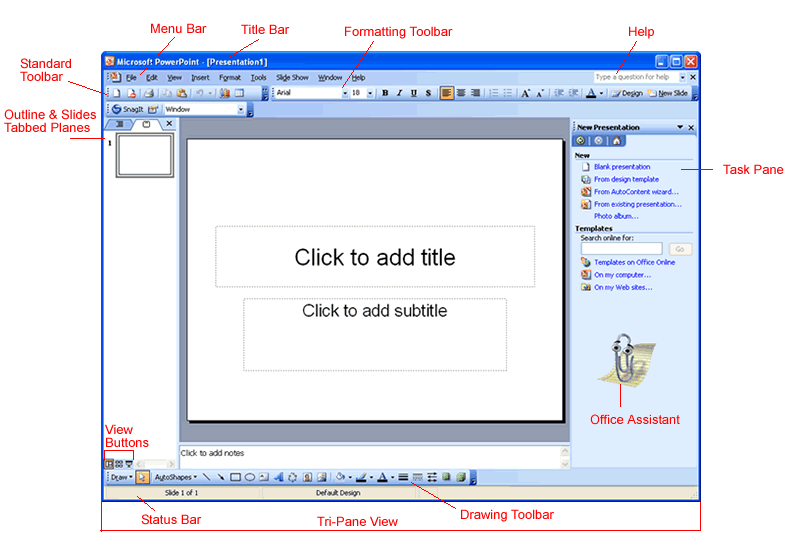
The Outline and Slides tabbed panes are located on the left side of the screen. Click the tabs to view an outline or slide of your presentation. The tabs render differently based on the size of the pane.

 You can show or hide PowerPoint's toolbars. Click the View menu, then choose Toolbar. Decide which toolbars you want to show or hide.
You can show or hide PowerPoint's toolbars. Click the View menu, then choose Toolbar. Decide which toolbars you want to show or hide.
The view buttons at the bottom-left corner of the screen allow three slide views: Normal View, Slide Sorter View, and Slide Show View.

The view buttons can be useful as you prepare your presentation. They control the way slides are displayed on the screen. Click a view button to see a different view.
Normal View  contains the Outline and Slides tabbed panes on the left, the Slide pane in the center, and the Task pane on the right.
contains the Outline and Slides tabbed panes on the left, the Slide pane in the center, and the Task pane on the right.
The Outline View shows the text of your presentation for easy editing, while the Slides View shows text and graphics of the slide you're working on. Click the tabs to switch between the two views. Under the center slide area is a place for notes.
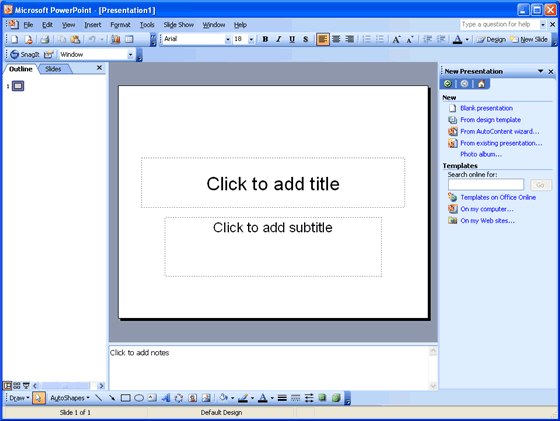
 You can hide or show the different panes in Normal View. To hide the task pane, click the View menu and choose Task Pane. (The View menu also allows you to choose other views). To hide the Outline View and Slide tabbed panes, click the X to the right of the Slides tab.
You can hide or show the different panes in Normal View. To hide the task pane, click the View menu and choose Task Pane. (The View menu also allows you to choose other views). To hide the Outline View and Slide tabbed panes, click the X to the right of the Slides tab.
Here are some other views that may be useful as you create your presentations:
Slide Sorter View  lets you see small versions of all the slides you have created. You can delete, copy, and move slides in this view.
lets you see small versions of all the slides you have created. You can delete, copy, and move slides in this view.
Slide Show View  lets you see your presentation electronically as it will appear to an audience.
lets you see your presentation electronically as it will appear to an audience.
The PowerPoint 2003 task pane is located on the right side of the screen. The down-pointing arrow in the top-right corner of the pane allows you to select different menus and tools. By default, the task pane appears when PowerPoint 2003 is launched.
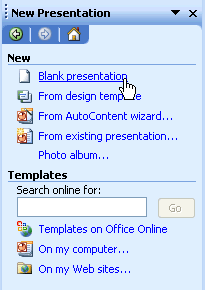
The Slide Layout and Slide Design panes within the task pane help organize layouts, design templates, and color schemes. When you select a design option, your slides are quickly updated with the new look.
You can view the Slide Layout and Slide Design panes by clicking on the down-pointing arrow next to New Presentation in the task pane.
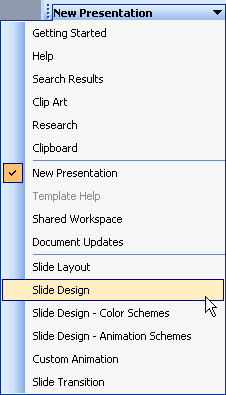
Select Slide Layout or Slide Design (Design Templates, Color Schemes, Animation Schemes). You'll learn more about using these panes later in this course.
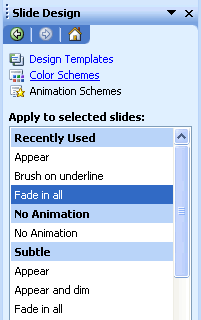
If you do not see the task pane on the right side of the PowerPoint window, you can easily access it.
 Task Pane.
Task Pane.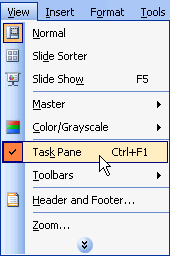

 You can hide or view the task pane by clicking View
You can hide or view the task pane by clicking View Task Pane.
Task Pane.
PowerPoint 2003's menu bar initially displays commands you use most frequently. To view infrequently used commands from a menu, use drop-down menus.
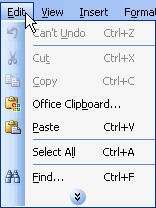
Notice that some menus have black arrows to the right. These are called cascading menus. Slide your mouse pointer over the arrow to view more options.
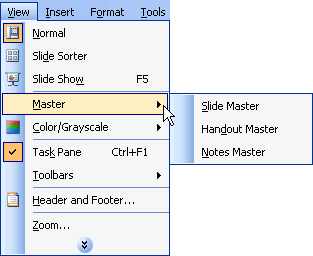
/en/powerpoint2003/creating-a-blank-presentation/content/